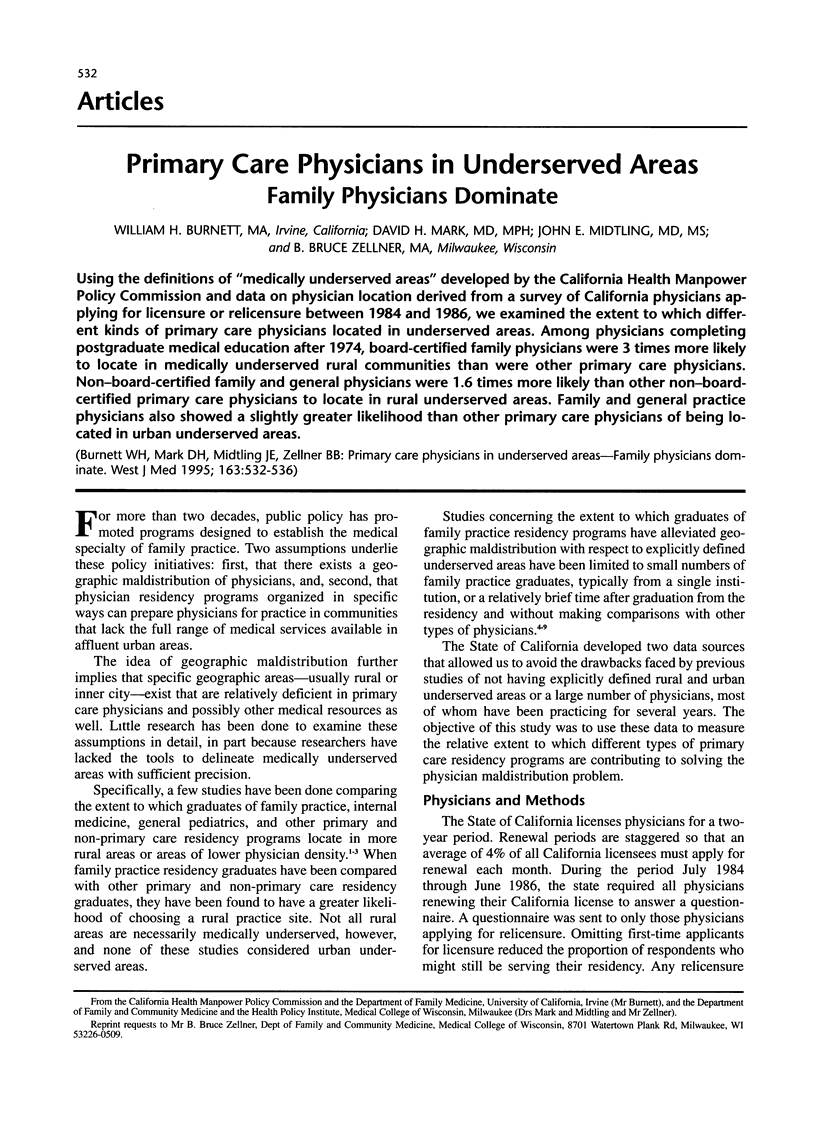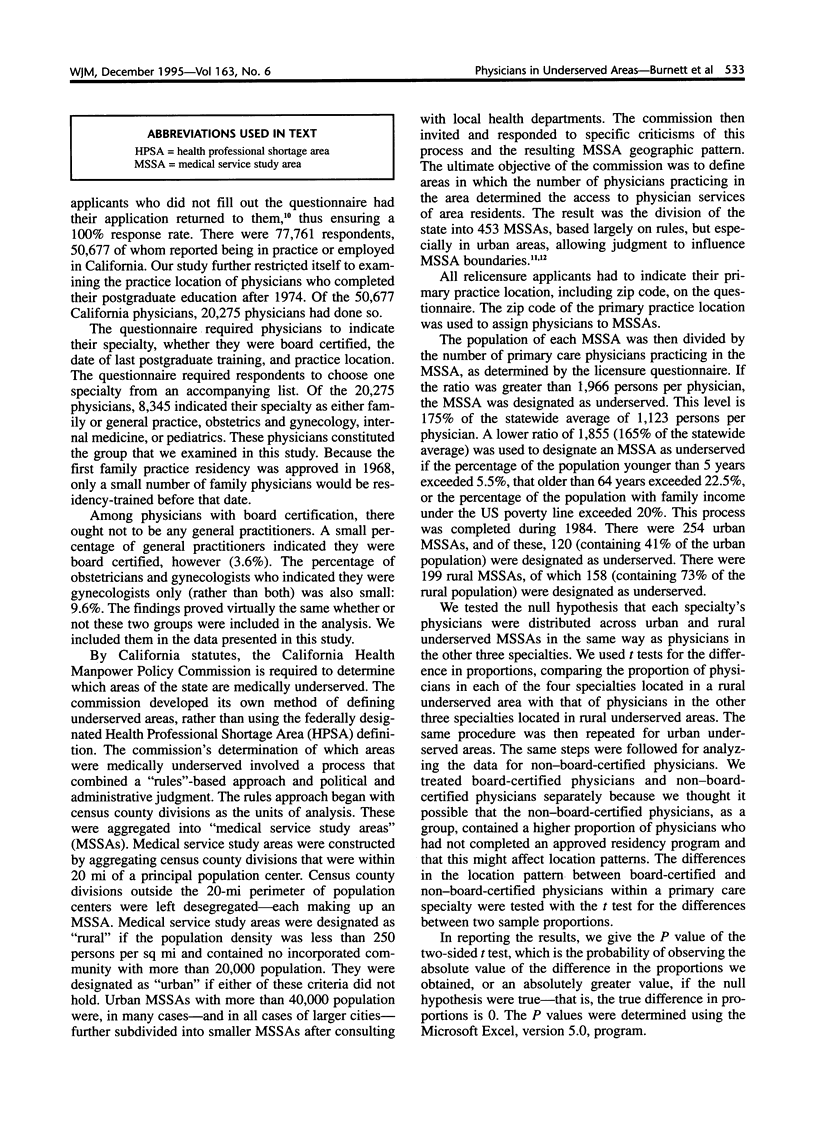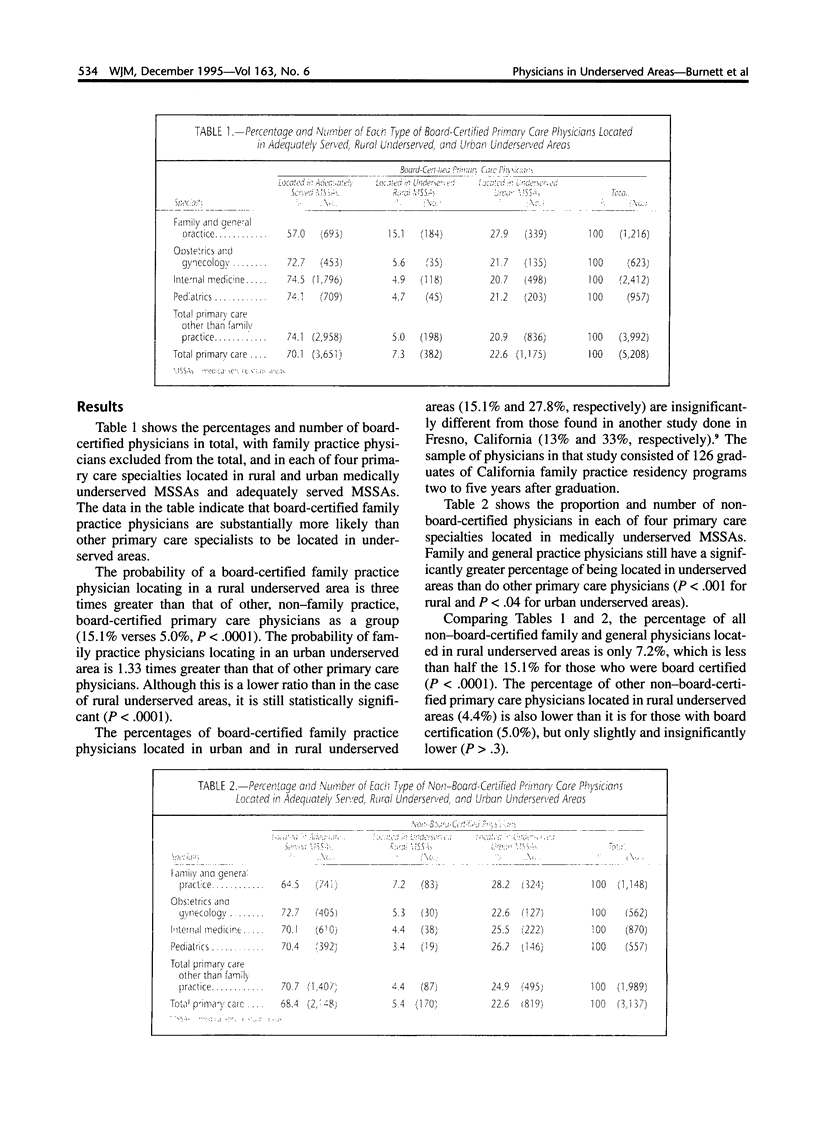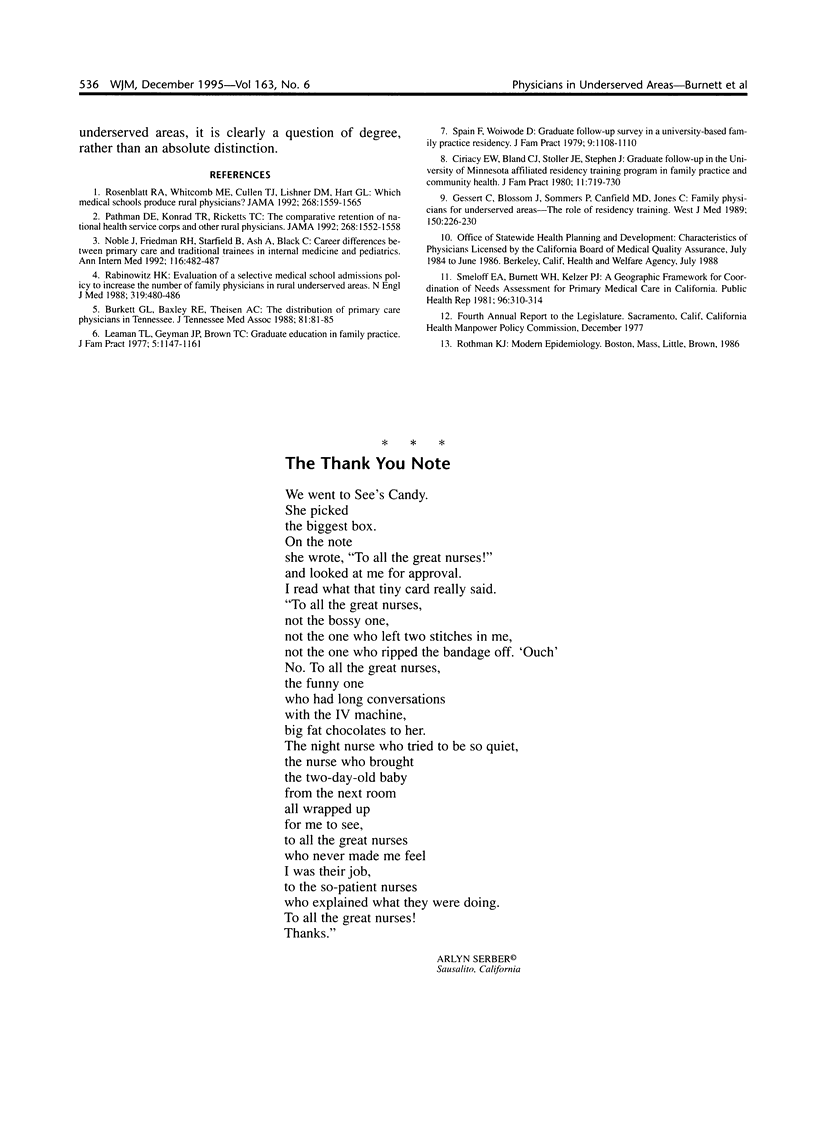Abstract
Using the definitions of "medically underserved areas" developed by the California Health Manpower Policy Commission and data on physician location derived from a survey of California physicians applying for licensure or relicensure between 1984 and 1986, we examined the extent to which different kinds of primary care physicians located in underserved areas. Among physicians completing postgraduate medical education after 1974, board-certified family physicians were 3 times more likely to locate in medically underserved rural communities than were other primary care physicians. Non-board-certified family and general physicians were 1.6 times more likely than other non-board-certified primary care physicians to locate in rural underserved areas. Family and general practice physicians also showed a slightly greater likelihood than other primary care physicians of being located in urban underserved areas.
Full text
PDF




Selected References
These references are in PubMed. This may not be the complete list of references from this article.
- Burkett G. L., Baxley R. E., Theisen A. C. The distribution of primary care physicians in Tennessee. J Tenn Med Assoc. 1988 Feb;81(2):81–85. [PubMed] [Google Scholar]
- Ciriacy E. W., Bland C. J., Stoller J. E., Prestwood J. S. Graduate follow-up in the University of Minnesota affiliated hospitals residency training program in family practice and community health. J Fam Pract. 1980 Nov;11(5):719–730. [PubMed] [Google Scholar]
- Gessert C., Blossom J., Sommers P., Canfield M. D., Jones C. Family physicians for underserved areas. The role of residency training. West J Med. 1989 Feb;150(2):226–230. [PMC free article] [PubMed] [Google Scholar]
- Noble J., Friedman R. H., Starfield B., Ash A., Black C. Career differences between primary care and traditional trainees in internal medicine and pediatrics. Ann Intern Med. 1992 Mar 15;116(6):482–487. doi: 10.7326/0003-4819-116-6-482. [DOI] [PubMed] [Google Scholar]
- Pathman D. E., Konrad T. R., Ricketts T. C., 3rd The comparative retention of National Health Service Corps and other rural physicians. Results of a 9-year follow-up study. JAMA. 1992 Sep 23;268(12):1552–1558. [PubMed] [Google Scholar]
- Rabinowitz H. K. Evaluation of a selective medical school admissions policy to increase the number of family physicians in rural and underserved areas. N Engl J Med. 1988 Aug 25;319(8):480–486. doi: 10.1056/NEJM198808253190805. [DOI] [PubMed] [Google Scholar]
- Rosenblatt R. A., Whitcomb M. E., Cullen T. J., Lishner D. M., Hart L. G. Which medical schools produce rural physicians? JAMA. 1992 Sep 23;268(12):1559–1565. [PubMed] [Google Scholar]
- Smeloff E. A., Burnett W. H., Kelzer P. J. A geographic framework for coordination of needs assessment for primary medical care in California. Public Health Rep. 1981 Jul-Aug;96(4):310–314. [PMC free article] [PubMed] [Google Scholar]
- Spain F., Woiwode D. Graduate follow-up survey in a university based family practice residency. J Fam Pract. 1979 Dec;9(6):1108–1110. [PubMed] [Google Scholar]


